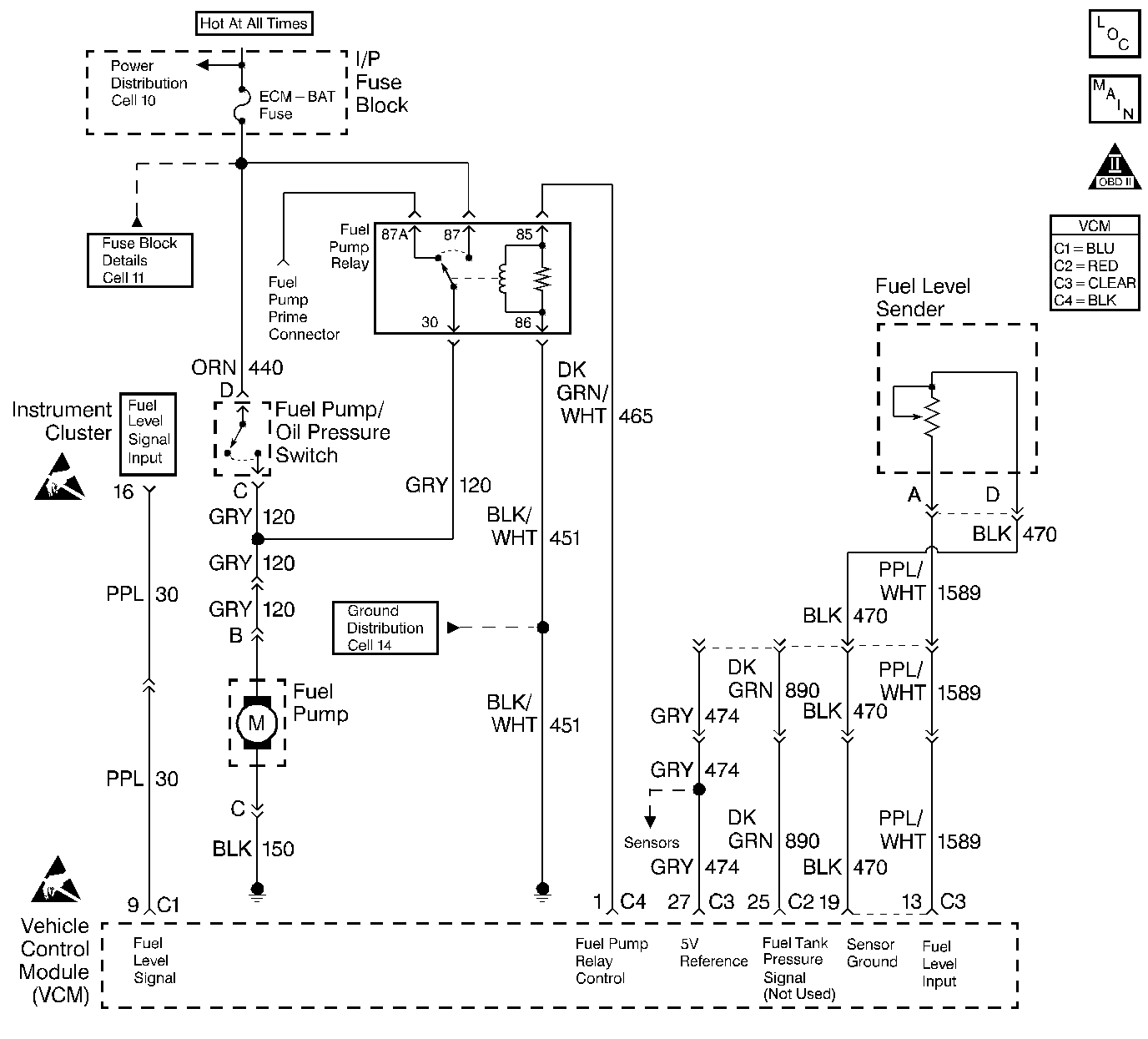
Circuit Description
The Fuel Level sensor is an important input to the VCM for the Enhanced Evaporative System Diagnostic. The VCM needs the fuel level information in order to know the volume of fuel in the tank. The fuel level affects the rate of change in the air pressure in the EVAP system. Several of the Enhanced Evaporative System Diagnostic sub-test are dependent upon the correct fuel level information. The diagnostic will not run when the tank is greater than 85% or less than 15% full. (This sensor signal disables the misfire when the fuel levels are less than 15%).
Conditions for setting the DTC
The following conditions will set the DTC:
| • | The Fuel Tank Level Slosh Test is completed |
| • | The Tank Level Main Test is completed |
| • | The Fuel Tank Level Data Valid |
| • | The Fuel Level signal is unchanged over a distance of 34 miles |
Action Taken When the DTC Sets
The VCM will not turn ON the MIL.
Conditions for Clearing the MIL or DTC
| • | The control module turns OFF the MIL after 3 consecutive drive trips when the test has run and passed. |
| • | A history DTC will clear if no fault conditions have been detected for 40 warm-up cycles. A warm-up cycle occurs when the coolant temperature has risen 22°C (40°F) from the startup coolant temperature and the engine coolant reaches a temperature that is more than 70°C (158°F) during the same ignition cycle. |
| • | Use a scan tool in order to clear the DTCs. |
Test Description
Numbers below refer to the step numbers on the diagnostic table.
-
This step determines if there is a wiring problem.
-
This step determines if the fuel level sender is operating correctly.
Step | Action | Value(s) | Yes | No | ||||||
|---|---|---|---|---|---|---|---|---|---|---|
1 |
Important: Before clearing the DTCs, use the scan tool in order to record the Freeze Frame and the Failure Records for reference. This data will be lost when the Clear Info function is used. Was the Powertrain On-Board Diagnostic (OBD) System Check performed? | -- | ||||||||
2 |
Did the Fuel Level Sensor voltage change? | -- | ||||||||
3 | This DTC is intermittent. Are any additional DTC stored? | -- | Go to the applicable DTC table | Go to Diagnostic Aids | ||||||
Is the voltage near the specified value? | 5.0 V | |||||||||
5 | Repair the open or short to ground in the Fuel Level signal circuit. Is action complete? | -- | -- | |||||||
6 | Check the Fuel Level Sender for the following:
Was a problem found? | -- | ||||||||
7 | Repair as necessary. Is the action complete? | -- | -- | |||||||
8 | Replace the Fuel Level Sender. Refer to Fuel Sender Assembly Replacement . Is the action complete? | -- | -- | |||||||
Did the Fuel Level Sensor voltage change? | -- | |||||||||
10 | Use the scan tool in order to display the Capture Info and the Review Info. Are there any DTCs displayed that have not been diagnosed? | -- | Go to the applicable DTC table | System OK |
